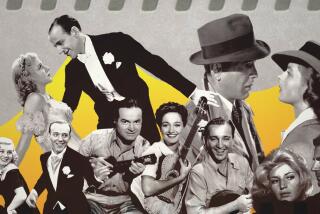The Little Girl Who Changed Television Forever
- Share via
Why is it, people wonder, that there’s often so little resemblance between the local news they read in the paper and what they see on the TV news--why a freeway chase that kept TV anchors rapt for an entire hour before it ended peaceably gets only a few paragraphs on a back page.
Here is why. Television is about the visual, first and last. TV needs pictures to tell stories. Newspaper reporters can print stories quoting people who don’t want their pictures taken, or about topics that are not at all visual--fraudulent test scores, corporate welfare. There’s a joke in TV news that really isn’t a joke: If it bleeds, it leads. So video of spectacular car-crash wreckage or a blazing garage fire may be the top story on the 9 o’clock news, while the top story in the paper is a big agreement hammered out by the mayor behind closed doors, beyond the cameras.
This is about the birth of live, on-the-scene television in Los Angeles, about how the car chases and the reporters in front of “live” courthouses began. It is about one of the most influential figures in Los Angeles television--a little girl who in all likelihood never even saw a television program, and then became one.
*
In the spring of 1949, there were perhaps 20,000 TV sets in Los Angeles. Prime-time viewers saw a lot of boxing, wrestling and roller derby, and dramas staged like plays. Children’s programming began at 7; “Kukla, Fran & Ollie” was still a couple of hours away on a late Friday afternoon, April 8, when a 3-year-old girl in a pink dress was racing across a vacant lot in San Marino and vanished feet-first into an abandoned waterwell pipe 14 inches wide.
Her name was Kathy Fiscus, and what happened to her 50 years ago changed the nature of TV news. The two-day, round-the-clock labors to save her flexed TV’s power. By the time Kathy’s body was taken out of the pipe two days later, TV had gone from a toy to a tool. As her gravestone and a memorial would note, she was “a little girl who brought the world together--for a moment” . . . and changed a medium forever.
A few years earlier, radio would have owned this story. But as rescuers and print and radio reporters and spectators by the thousands arrived in San Marino, so, after a while, did the cumbersome apparatus of TV. A KTTV crew showed up. So did KTLA.
Kathy Fiscus’ rescue effort lasted more than 50 hours; KTLA was on the air for 27 hours and 30 minutes of it. Remember that until 1963, network newscasts were only 15 minutes long, often little more than radio with a face. My mother remembers seeing Douglas Edwards on TV, reading a news story about a young Prince Charles and simultaneously holding up a photo of him for the camera. Compare that to the moment-by-moment rescue drama of real men, volunteers, all haggard, all determined, a real race about time and machines and life and death.
Neighbors of only nodding acquaintance asked to come over to watch TV. A hardware store in Azusa drew a crowd because it had a TV. The Times’ future TV critic, Cecil Smith, was driving home at 2 a.m. when he saw a hundred people against a store window, watching TV. Watching the Kathy Fiscus rescue.
One rescuer would later donate his share of public contributions to buy a TV for little girls in a Duarte TB sanitarium. The girls named their set “Kathy.”
*
They brought Kathy Fiscus out of the pipe on Palm Sunday. The doctor who delivered her told the world that she had died not long after she fell in.
Her death saved lives. State after state enacted Kathy Fiscus laws to seal up old wells. The day she fell in, her father, a water engineer, had just returned from testifying in Sacramento, urging the state to cement over abandoned wells to stop pollution.
Her mother, Alice Fiscus, still lives in California. She remembers the people, the letters from every country in the world but the Soviet Union, grieving as if Kathy had been one of theirs. Even all these years later, a clerk may glance at her credit card and say, “I knew of a Fiscus, Kathy Fiscus--are you any relation?”
TV did that, Alice Fiscus knows; it still does that. “The world is right there, every minute now. It’s not something that happened a week ago yesterday, it’s right in your lap 24 hours a day.
There’s times,” she says, “when you’d just as soon not know for 48 hours.” Only a month ago she decided, “It’s time,” and sat down to watch, to endure, a show about the 1987 rescue of another child trapped in a well, Jessica McClure.
The same day Kathy Fiscus dominated Page One, a little Santa Monica girl drowned in a fishpond at home, and a letter to The Times demanded to know why the public wasn’t aroused by the dangers of fishponds. We know the answer: because it wasn’t on TV.
And Stan Chambers, who reported the Kathy Fiscus story and became as fixed in L.A.’s TV firmament as a TV camera itself, got a letter of appreciation about the story that was also prophetic. “Until last night,” it read, “the television set was no more a threat to serenity than any other bit of furniture in the living room. Now you have utterly destroyed this safety forever . . . .”
More to Read
The complete guide to home viewing
Get Screen Gab for everything about the TV shows and streaming movies everyone’s talking about.
You may occasionally receive promotional content from the Los Angeles Times.







